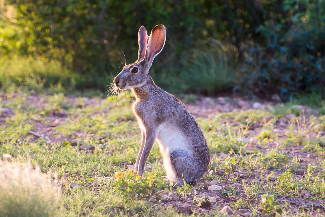The park is home to an incredible diversity of wildlife. More than 200 species have been documented, and 44 are known to breed there. These include rare species such as the prairie falcon, burrowing owl, white-throated swift, and ash-throated flycatcher. In addition, the park is listed on the National Register of Historic Places. The park is a popular spot for native plants and wildlife enthusiasts. Its sheltered pockets of fertile soil, proximity to water, and microclimates help sustain this distinctive wildlife community.
The park contains remnant oak-juniper woodland. These trees are descendants of trees that covered the region during the end of the Ice Ages. The forest contains interesting plants, including comal snakewood, a three to 10-foot tall shrub, and Texas hummingbird mint, a multi-branched perennial.
The area was a popular stopping point for emigrants and adventurers on the Overland Mail. The town later became the center of a major ranch, and the descendants of those ranchers still live in the area today. In 1852, the United States Boundary Commissioner John R. Bartlett visited the area. Then, in 1858, the Butterfield Overland Mail established a stagecoach station at Hueco Tanks. The station was abandoned in 1858, but Silverio Escontrias eventually acquired the ranch.
This park is also home to a diverse collection of rock art. Its ancient inhabitants included the Mescalero, Lipan, and Jumano Apache tribes. In addition to being home to Native Americans, the area was also a favorite of Comanche and Kiowa raiders. Today, visitors can view 5,000 pictographs and petroglyphs at the park. While many of these paintings are fragile, the park’s recent restoration projects have helped preserve some of them. However, modern graffiti is threatening the rock art in the area.
The park is also home to a wide variety of wildlife. Despite being in a desert, animals from all habitats have made this place their home. Birds, reptiles, and even snails are commonly found in the area. Moreover, three aquatic species live in the park.
Before visiting Hueco Tanks State Park, it is important to call ahead. The staff will explain the park’s regulations and provide an informative video. Afterward, you’ll need to pick a guide and set a time for your tour. In addition, you’ll need to purchase a backcountry permit to access the hill’s northern region.
Hueco Tanks State Park is also a popular destination for climbers. It is one of the best places in the country for bouldering. However, the park has strict rules and regulations to protect the park and native American rock art. It also limits the number of people who can visit at a time. You’ll also be restricted in what areas you can climb and how you can reach them.
The area is also home to the Jornada pictographs. The site is home to more than 200 pictographic “masks” and is considered one of the largest in the country. Besides rock art, the park also features hiking trails, bouldering, and camping.


